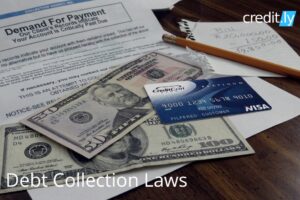[et_pb_section fb_built=”1″ _builder_version=”3.22.3″][et_pb_row _builder_version=”3.25″ background_size=”initial” background_position=”top_left” background_repeat=”repeat”][et_pb_column type=”4_4″ _builder_version=”3.0.47″ custom_padding=”|||” custom_padding__hover=”|||”][et_pb_post_title _builder_version=”3.26.6″ title_font=”|700|||||||” title_line_height=”2em” z_index_tablet=”500″ title_text_shadow_horizontal_length_tablet=”0px” title_text_shadow_vertical_length_tablet=”0px” title_text_shadow_blur_strength_tablet=”1px” meta_text_shadow_horizontal_length_tablet=”0px” meta_text_shadow_vertical_length_tablet=”0px” meta_text_shadow_blur_strength_tablet=”1px” box_shadow_horizontal_tablet=”0px” box_shadow_vertical_tablet=”0px” box_shadow_blur_tablet=”40px” box_shadow_spread_tablet=”0px” text_shadow_horizontal_length_tablet=”0px” text_shadow_vertical_length_tablet=”0px” text_shadow_blur_strength_tablet=”1px”][/et_pb_post_title][et_pb_text _builder_version=”3.29.2″ z_index_tablet=”500″ text_text_shadow_horizontal_length_tablet=”0px” text_text_shadow_vertical_length_tablet=”0px” text_text_shadow_blur_strength_tablet=”1px” link_text_shadow_horizontal_length_tablet=”0px” link_text_shadow_vertical_length_tablet=”0px” link_text_shadow_blur_strength_tablet=”1px” ul_text_shadow_horizontal_length_tablet=”0px” ul_text_shadow_vertical_length_tablet=”0px” ul_text_shadow_blur_strength_tablet=”1px” ol_text_shadow_horizontal_length_tablet=”0px” ol_text_shadow_vertical_length_tablet=”0px” ol_text_shadow_blur_strength_tablet=”1px” quote_text_shadow_horizontal_length_tablet=”0px” quote_text_shadow_vertical_length_tablet=”0px” quote_text_shadow_blur_strength_tablet=”1px” header_text_shadow_horizontal_length_tablet=”0px” header_text_shadow_vertical_length_tablet=”0px” header_text_shadow_blur_strength_tablet=”1px” header_2_text_shadow_horizontal_length_tablet=”0px” header_2_text_shadow_vertical_length_tablet=”0px” header_2_text_shadow_blur_strength_tablet=”1px” header_3_text_shadow_horizontal_length_tablet=”0px” header_3_text_shadow_vertical_length_tablet=”0px” header_3_text_shadow_blur_strength_tablet=”1px” header_4_text_shadow_horizontal_length_tablet=”0px” header_4_text_shadow_vertical_length_tablet=”0px” header_4_text_shadow_blur_strength_tablet=”1px” header_5_text_shadow_horizontal_length_tablet=”0px” header_5_text_shadow_vertical_length_tablet=”0px” header_5_text_shadow_blur_strength_tablet=”1px” header_6_text_shadow_horizontal_length_tablet=”0px” header_6_text_shadow_vertical_length_tablet=”0px” header_6_text_shadow_blur_strength_tablet=”1px” box_shadow_horizontal_tablet=”0px” box_shadow_vertical_tablet=”0px” box_shadow_blur_tablet=”40px” box_shadow_spread_tablet=”0px”]A revolving debt is a kind of debt that credit cards typically offer, and it is a pretty simple and straightforward way for a consumer to obtain credit. However, there are some slight complications when you begin to compare revolving debt with a traditional loan.
How Does Debt Impact Your Credit In the Short Term?
It’s now more complicated then ever when it comes to understanding your credit scores. The amount of debt you owe — also commonly referred to as your credit utilization — is second in importance only to whether you pay your bills on time.
The amount of credit currently being used, also known as “Credit Utilization” — essentially how much debt you’re carrying versus how much credit has been extended to you collectively and on individual credit cards — accounts for 30% of most major credit scores. (Payment history accounts for 35%.)
It’s easy to understand why your debt levels are so important. A consumer that is heavily in debt is a poor credit risk compared to someone who has a low to moderate amount of debt.
Consider the following – … would you rather lend $1000 to someone who has borrowed $1000 from everyone on the block or someone who has no debt? The person who has no debt looks like the better option because they will most likely pay you back.
In addition, there are several different debt types that appear on your credit report, but when it comes to credit utilization, your revolving debts are of utmost importance.
Revolving Debt
Another type is called “Revolving Debts”, like a credit card or home equity line of credit, have a predetermined credit line, but no set monthly payment — meaning the borrower has more control over their credit utilization rate on the account.
For best credit scoring results, it’s generally recommended you keep revolving debt below at least 30% and ideally 10% of your total available credit limit(s). Of course, the lower your amount of debt, the better.
With that in mind, let’s break down the different types of debt even further and review how to identity them on your credit report.
What Different Types of Debt do Credit Reports Show?
There are several different types of debt:
1. Installment Debt
Installment debt is money owed to a creditor who expects repayment over a fixed period of time made in equal monthly amounts. A mortgage or a car loan is an example of installment debt. You are making the same payment over a fixed schedule of time.
An auto loan, for example, might call for 48 equal payments of $300. A home loan might call for the same payment of $1000 every month for 30 years. You are paying these loans off in predetermined installments.
On your credit report it is easy to tell if an account is being reported as an installment account. The numeric Current Status rating will be prefaced by an “I.” The “I” stands for installment.
2. Revolving Debt
We mentioned this already, but, more specifically, revolving debt is money owed to a creditor who sets your monthly payment based on the current balance. Credit cards or retail store cards are examples of revolving credit accounts. Each month your credit card balances vary based on your shopping activity from the previous month and any unpaid amount is rolled over or “revolved.”
Typically, if you spend more on your credit cards during the month, the minimum required payment for the month will be higher.
As with installment debt, revolving debt is easily identified on your credit report. An “R” prefaces the numeric Current Status rating. The “R” stands for revolving credit accounts.
3. Open Debt
Open debt is the least common type of debt to be found on your credit report. “Open” means that each month you run up a balance and pay it in full when you get your bill. Your cell phone is a good example of open debt.
The American Express Green Card is another example of open debt. You don’t have a predefined credit limit and you have to pay the balance in full each month.
“O”
An “O” prefaces the numeric Current Status rating. The “O” stands for open.
| Subscriber | Discover Card | Citibank | American Express |
| Account Number | 30492383XXXX | 98003XXXX | 10274562XXXX |
| Account Type | Revolving | Installment | Open |
| Credit Limit | $20,000 | $750,000 | N/A |
| (High Credit) | $6,862 | $37,000 | $2,000 |
| Minimum Monthly Payment (Terms) | $19 | $2,000 | N/A |
| Date Opened | April, 2006 | August,
1999 |
July,
2003 |
| Date of Status | On March, 2007 | March, 2007 | March, 2007 |
| Last Payment Date | On February, 2005 | February, 2005 | February, 2005 |
| Loan Type | Credit Card, Terms REV | Mortgage | Credit Card, Terms OPEN |
| Current Status | R1 | I1 | O1 |
How Is Debt Measured Relating to My Credit Score?
It’s typically seen as percentage. Your level of debt is measured in a number of ways, each of which has a different impact to your credit scores and credit history.
Your Aggregate Debt
Aggregate debt is measured by simply adding up all of the balances as reported on your credit reports. If you have an auto loan, a mortgage, and a credit card with balances then your aggregate debt will be the sum of all those balances.
| Subscriber | Discover Card | Citibank | American Express |
| Account Number | 30492383XXXX | 98003XXXX | 10274562XXXX |
| Account Type | Revolving | Installment | Open |
| Credit Limit | $20,000 | $750,000 | N/A |
| (High Credit) | $6,862 | $37,000 | $2,000 |
| Minimum Monthly Payment (Terms) | $19 | $2,000 | N/A |
| Date Opened | April, 2002 | August,
1998 |
July,
2004 |
| Date of Status | On March, 2005 | March, 2005 | March, 2005 |
| Last Payment Date | On February, 2005 | February, 2005 | February, 2005 |
| Loan Type | Credit Card, Terms REV | Mortgage | Credit Card, Terms OPEN |
| Current Status | R1 | I1 | O1 |
| Aggregate Debt | $45,862 |
Your Number of Accounts with a Balance
This is meant to measure the breadth of your debt, not necessarily your total amount of debt. If you are currently using multiple credit cards and also have other installment loans such as an auto loan or a mortgage loan, then these will all show up as separate accounts all with balances.
So, for example, if you have three credit cards, a home loan and a mortgage all with balances then you have five accounts with a balance.
| Subscriber | Discover Card | Citibank | American Express |
| Account Number | 30492383XXXX | 98003XXXX | 10274562XXXX |
| Account Type | Revolving | Installment | Open |
| Credit Limit | $20,000 | $750,000 | N/A |
| (High Credit) | $6,862 | $37,000 | $2,000 |
| Minimum Monthly Payment (Terms) | $19 | $2,000 | N/A |
| Date Opened | April, 2002 | August,
1998 |
July,
2004 |
| Date of Status | On March, 2005 | March, 2005 | March, 2005 |
| Last Payment Date | On February, 2005 | February, 2005 | February, 2005 |
| Loan Type | Credit Card, Terms REV | Mortgage | Credit Card, Terms OPEN |
| Current Status | R1 | I1 | O1 |
| Number of Accounts with a Balance | 3 |
Your Revolving Utilization
Revolving utilization is the amount of your revolving credit limits that you are currently making use of. Remember that a revolving account is an account where your monthly payment is based on your balance. The majority of revolving accounts are credit cards or retail store cards of some type. There are some Home Equity accounts that are also considered revolving. Here is how you can determine your revolving utilization:
- Look at your credit reports and identify all of your revolving accounts. Each of these accounts has a Credit Limit (the most you can spend on that account) and a Current Balance (the amount that you currently owe on that account).
- Then add together all the Credit Limits on all of your revolving accounts. We’ll call this your “Total Credit Limit.”
- Add together all of the Current Balances on the same revolving accounts you just used to determine your Total Credit Limit. We’ll call this your “Total Balances.” Total Balances should be less than your Total Credit Limit amount.
- Now divide the Total Balances amount by the Total Credit Limit amount and multiply that number by 100. This will yield Your Revolving Utilization percentage.
Another Example
If I have two credit cards each with a $5,000 credit limit then my total credit limit is going to be $10,000. If I have a $2,500 balance on each of those cards, then my total balance is going to be $5,000.
I divide $5,000 by $10,000 and I get .5. Multiply .5 by 100 and you get 50%. My Revolving Utilization is 50%.
Total Balances ÷ Total Credit Limits = Your Revolving Utilization
This is exactly how creditors and credit scoring models determine your revolving utilization. The percentage that you just calculated tells them how much of your available credit you are currently using. You want this number to be as low as possible.
Again, there is nothing wrong with being in debt as long as it is managed responsibly, and it doesn’t get to the point where it can be overwhelming. Your creditors will do their best to ensure that you won’t get overextended. When you apply for a loan or for a credit card they check your credit reports and measure your level of debt.
If it’s excessive they will simply decline your application or counter offer with a loan product that’s more in line with your current level of debt. This is how the industry polices itself. While this works some of the time there are instances where overly aggressive lenders grant credit with little regard for the consumer’s debt load.
The result is a consumer with so much debt that they are literally one paycheck away from not being able to make their minimum payments. That’s why it’s important to know where your debt levels stand so you can ensure you don’t overextend yourself.
You can monitor your debt levels by viewing your free credit report snapshot, along with two free credit scores, on Credit.ly.
How is Your Debt Listed & Displayed on Your Credit Reports?
Each account on your credit report has a section that lists your current balance, or your amount of debt. This balance is generally the amount you owe on the account as of your previous month’s statement.
This “staggered balance” practice is common regardless of whether the account is a mortgage, auto loan, credit card or some other type of credit account; though some credit reports have started including tiered credit card data that show balances over-time in an effort to widen credit availability.
The following example shows the first approach we mentioned.
| Subscriber | Discover Card | Citibank | American Express |
| Account Number | 30492383XXXX | 98003XXXX | 10274562XXXX |
| Account Type | Revolving | Installment | Open |
| Credit Limit | $20,000 | $750,000 | N/A |
| (High Credit) | $6,862 | $37,000 | $2,000 |
| Minimum Monthly Payment (Terms) | $19 | $2,000 | N/A |
| Date Opened | April, 2002 | August,
1998 |
July,
2004 |
| Date of Status | On March, 2005 | March, 2005 | March, 2005 |
| Last Payment Date | On February, 2005 | February, 2005 | February, 2005 |
| Loan Type | Credit Card, Terms REV | Mortgage | Credit Card, Terms OPEN |
| Current Status | R1 | I1 | O1 |
How Can You Ensure Earning the Maximum Points Available Out of the Amount of Debt Category?
- Keep your revolving balances as low as possible. The lower your monthly balances the lower your utilization percentage will be. One of the easiest ways to quickly boost your credit score involves paying down a credit card with a high balance relative to its credit limit.
- Try and increase your credit limits. Revolving Utilization is really nothing more than a math problem. If you can’t decrease your balances, then you can have the same effect by increasing your credit limits. However, you must have enough self-control to not use up the increased credit limit or you’ll make your situation worse.
- Do NOT close unused credit card accounts. The most common and, unfortunately, most incorrect advice given to improve your credit scores is to close unused credit card accounts. This does not increase your scores and can wreak havoc on your revolving utilization thus causing your scores to go down.
- Also don’t let your creditors close your unused credit cards for you. If you have credit cards that you do not use, the credit card companies will eventually close them. They are losing money on you each month that you don’t use your card and eventually they’ll have had enough. Use your card once or twice every few months for dinner or some other low-dollar item and pay it off once the bill comes.
- You must not obsess about paying all your credit cards down to zero. You don’t necessarily need to have 0% utilization to have a good credit score. Most people don’t have the means to simply write a check and pay off all of their credit card balances. Endeavor to pay them down so your utilization percentage is as low as possible and try to make larger dents over time.
Summary
If you follow these tips for improving your credit, you will be well on your way to improved financial health and your credit scores will thank you for it.
[/et_pb_text][/et_pb_column][/et_pb_row][/et_pb_section]









